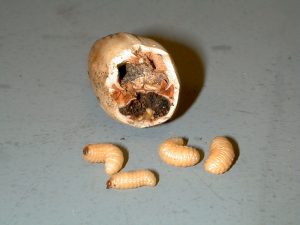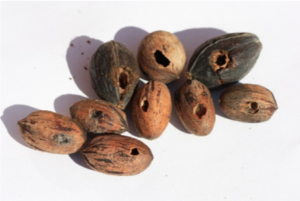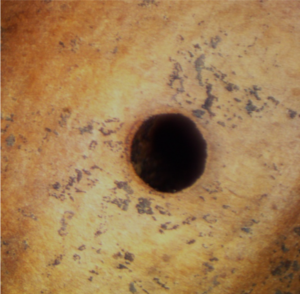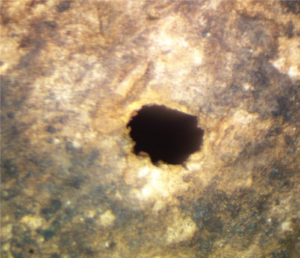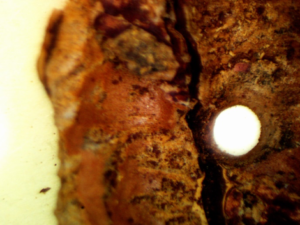Verifying Pecan Weevil Damaged Pecans Through Microscopic Examination
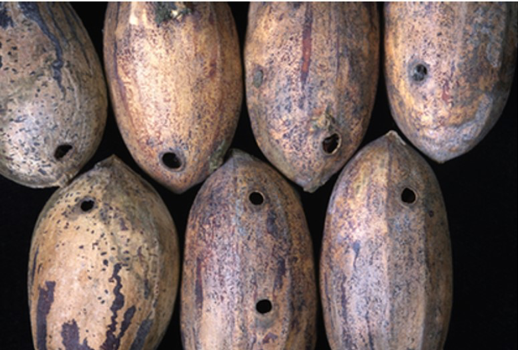
Pecan weevil larval exit holes. (Photo by Pat Porter, Texas A&M AgriLife Extension)
1. Pecan weevil infested nuts typically contain three or four larvae with all larvae becoming ready to exit the nut at the same time. It is thought that each larva begins to cut an exit hole in the shell. Typically, the one that breaks through first completes it and other larvae exit through it too; occasionally a nut will contain two pecan weevil exit holes.
2. Bird pecks and rodent gnawing can scar or damage the exterior nut surface but seldom leave a distinct circular hole the size of the PW head capsule. With this type of damage, there will be kernel (or nut meat) still present in the pecan.
3. This is an exterior view of a pecan weevil larval exit hole. The circular hole size corresponds to the round, hard head capsule of the larva which presses through the hole and is followed by the larger fleshy body.
The circular, head capsule size hole with mandibular scars and beveled edge around the exterior edge of the shell are considered definitive evidence of pecan weevil nut infestation.
4. This exterior view of a hole in a pecan shell, although almost circular it is irregular in shape with sharp, defined edges, not characteristic of pecan weevil larval emergence.
5. This is an interior view of the pecan weevil larval exit hole. Note the round beveled appearance. The small mandibles of the larvae cut the exit hole through the shell which leaves scars on the inside surface around the exit hole.
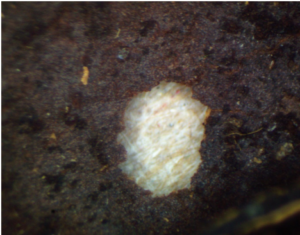
The view from inside a pecan looking at a hole that was not created by pecan weevil. (Photo by Bill Ree)
6. This is an interior view of a hole created in a pecan shell by an unknown source. Note the irregular shape and the sharp edges of the hole.
For additional information on pecan weevil, visit the Pecan ipmPIPE website.

